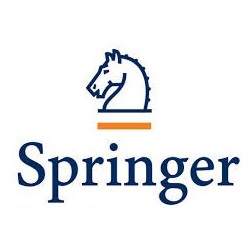Abstract
ZnO nanoparticle–based multilayer nanocomposite films were fabricated on cationized woven cotton fabrics via layer-by-layer molecular self-assembly technique. For cationic surface charge, cotton fabrics were pretreated with 2,3-epoxypropyltrimethylammonium chloride (EP3MAC) by pad-batch method. XPS and SEM were used to examine the deposited nano-ZnO multilayer films on the cotton fabrics. The nano-ZnO films deposited on cotton fabrics exhibited excellent antimicrobial activity against Staphylococcus aureus bacteria. The results also showed that the coated fabrics with nano-ZnO multilayer films enhanced the protection of cotton fabrics from UV radiation. Physical tests (tensile strength of weft and warp yarns, air permeability and whiteness values) were performed on the fabrics before and after the treatment with ZnO nanoparticles to evaluate the effect of layer-by-layer (LbL) process on cotton fabrics properties.
Introduction
Layer-by-layer assembly (LbL), invented by G. Decher, is a unique technique for the fabrication of composite thin films. The sequential adsorption of oppositely charged polycations and polyanions on solid surfaces leads to the buildup of polyelectrolyte multilayer films. The sequential multilayer deposition can be carried out by immersing the substrate into the cationic and anionic solutions, alternately. After deposition of each layer, the substrate is immersed into the washing solution. Both adsorption steps can be repeated cyclically to form multilayer structures on the surface of a substrate. A wide range of functional molecules can be incorporated within the film, including nanoparticles, dyes, proteins and other supramolecular species [1–5].
Conclusions
ZnO nanoparticles assembly for the multilayer film formation on the cotton fabrics were prepared by layer-bylayer deposition process. XPS and SEM analyses were employed to examine the nanocomposite multilayer films on the cotton fibers. The SEM micrograph results indicated a significant difference in the morphology of the fibers before and after the LbL deposition process. Elemental analysis showed that there is a linear relationship between the deposited numbers of layers and Zn content. LbL deposition process with ZnO nanoparticles does not considerable effects on the air permeability, whiteness value and tensile strength properties of cotton fabrics. It was clearly concluded that the nano-ZnO multilayer deposited on cotton fabrics showed excellent antibacterial activity against to Staphylococcus aureus bacteria. Cotton fabrics on which nano-ZnO multilayer films were deposited by LbL process were proved to have better UV protection property than the untreated fabric in addition to the efficient antibacterial activity. This work provides a novel and simple method for nano-ZnO nanocomposite film deposition on cotton fabrics and their application onto cotton fabrics to gain antibacterial and UV protection functions.








